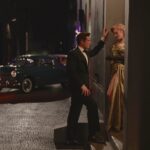The recently completed remake of the 1974 Charles Bronson vigilante thriller, Death Wish, has undergone an exceedingly long gestation period and painful birth. Media reports of “creative differences” involving scripting and casting have contributed to years-long controversy surrounding a film whose trailer stoked a social media firestorm.
Then, in October 2017, a month before the film’s expected release, the deadliest mass shooting in American history occurred at MGM-owned Mandalay Bay Resort and Casino in Las Vegas. Just days after the horrific incident, MGM films announced it would delay the release of Death Wish.
At press time, the Eli Roth-directed film, starring Bruce Willis, was bumped from a November 2017 to a March 2018 opening. Although PLSN could not confirm that MGM’s decision to slow-roll the reboot’s premiere was a direct result of the tragedy in Las Vegas, it seems likely that Death Wish, when it is screened, will trigger the continuing debate on a variety of hot-button issues.
Netherlands native Rogier Stoffers, the film’s DP and veteran of such movies as The Disappointments, Room, John Q and Disturbia, was tasked with visually enhancing the often brutal and uncomfortable themes of Death Wish.
New York to Chicago
Although the mean streets of New York City provided the setting for the original 1974 Bronson vehicle (with two of the four 1980’s/1990’s Bronson sequels set in Los Angeles), Chicago’s gangland neighborhoods are the hunting grounds in which Willis’ vengeful protagonist Paul Kersey, an ER surgeon, administers his form of street justice for the 2018 release. (Ironically, the latest remake was largely shot in Canada.)
Cross-cutting and other editing techniques recall the golden age of 1970s cinema, but it was LED lighting and DMX controls that assisted Stoffers in illuminating the movie’s overarching concepts. An ability to paint urban environments with a subdued palette and patches of vivid hues made the veteran cinematographer a wise choice for DP.
When PLSN caught up with Stoffers, he was in Georgia with Roth, prepping for their next project together — The House With a Clock in Its Walls, starring Cate Blanchett, Jack Black and child actor Owen Vaccaro. “The movie is based on a children’s horror novel from the 1970s,” Stoffers reports. “Now we’re playing more in Eli’s front yard.”
True. But the Hostel director understands the power of vicarious vigilantism. It’s this quality and others that have made Death Wish a timeless cinematic property. It’s also why Stoffers’ expertise was crucial in applying the appropriate lighting to this modern-day spin on the romantic view of the American outlaw mythos.
PLSN: From what we’ve seen, it’s obvious the level of detail put into the new Death Wish.
Rogier Stoffers: [Eli Roth’s] thought was that everything had to look good and be realistic. Neither of us were into making it completely over-the-top crazy, just for the effect. [Roth] is such an incredible film buff. He has seen every movie, and can sketch every scene that he’s ever watched in his life, I think…One of the great things [Roth] did was to introduce talk radio show [hosts], people like Sway, to independently comment on what was going on with the story.
It provides a kind of running narrative for the unfolding events.
Yeah, which places it right in the here and now. I’ve done a bunch of re-makes, and sometimes it’s like, “Okay. Why did we remake this movie?” [laughs] But it’s timely, considering the incidents of gun violence in Chicago. Also, you have this incredible universal feeling, this revenge feeling. Everybody understands that if somebody kills your wife and hurts your daughter you want to go after him, or them, even if nobody else does. It’s just primal instinct. That’s an interesting theme to work with.
In the original, the thugs who perpetrated the crimes that helped to turn Bronson’s character into a vigilante were not brought to justice — Bronson’s brand of justice, anyway. Does the remake follow the same path?
That is kind of a plot spoiler. [Laughs]
Some viewers might see similarities between The Fugitive, the 1993 film starring Harrison Ford, and the new Death Wish. Both seem to treat the city of Chicago as a personified character.
We had actually looked at a movie like The Fugitive, because it was set in Chicago and there are scenes that take place in a hospital. The first movie I did in the States, John Q. [set in Chicago], I actually never went to Illinois for. We did everything in Toronto. I worked on The Vow, with [director] Michael Sucsy, and we did four or five days in Chicago. For [Death Wish], we were going to go to Toronto, but at the last minute, Toronto was too busy so we went to Montreal. Actually, this is Montreal standing in for Chicago, with just one long day of main-unit shooting. It was one day with Bruce…on the phone, in the underground, being out on the street…The second unit did the opening sequence and some other connecting tissue. The rest was all shot on the stage and on the streets of Montreal — the real Hollywood way.
How long did this take to shoot?
We had about 52 days of [main-unit] shooting and there was a week of second unit.
Some of the 1974 film was shot at night. That very stark lighting was typical of the 1970s…
Those big lights, the hard lights coming in, yeah. That was the only way to [film at night] in the 1970s. My interest is not in hard light. All of my years in film I wanted to capture the realistic look of the environment. I wanted the film to appear on screen as it would in life. The streetlights that appear in the film are a good example. I wanted to capture light from the sodium vapor [lamps] and all the colors of the city, which can be very difficult to do with film. The great thing about our digital revolution is that we have cameras that can capture reality pretty well now. We also have lights that can, so simply, emulate colors that you see in the city. Death Wish was the first movie that I could really use DMX and different LED lights on a large scale, including the Arri SkyPanels.
Beyond the Arri, what specific LED fixtures did you use?
Well, the SkyPanel is the main thing, because it’s full RGB and can do so many things. The gaffer I work with, Marco Venditto, who is from Montreal and had worked on X-Men, has a whole range of LED [panels] called D-Lights [a WiFi-based LED whose colors can be changed in real time while shooting]. You can Velcro or tape them to a wall. We used a ton of those in the hospital [scenes]. Those were our main LED sources, except for using the Litegear LiteRibbon that I always use in cars.
How did you achieve what appears to be a very “clean” look for the hospital scenes?
Hospitals can be so boring, because it’s all fluorescents. Before you know it, everything is the same; it’s just a white hallway with the same colors. The hospital … was filmed in Montreal. Since this was a bigger budget movie we were able to control and add our own florescent lights everywhere. We tested the lights and had cooler colors in the center [of the set] and warmer color to the sides….If actors are walking, their faces tend to remain “cool” but the walls tend to go “warm.” You can hit actors with all these different colors without it being weird. It’s a way to achieve a lot more depth.…When it’s revealed that [Willis] is a surgeon in the hospital, it’s one long [Steadicam shot] through all those hallways and the waiting room, into the ER. The shot goes through a number of different colors.
How challenging was it to work with the Steadicam?
I’ve always loved doing long shots….I like the idea of following people to a particular destination, but it makes producers nervous, because, for a movie like School of Rock, we had something like 1,100 people sitting in a theater. Then you follow the kids up stairs and down hallways…Still, I love Steadicam shots to introduce the audience or a character to a new arena and new place. In Death Wish, we are in the hospital following this gurney all the way through the halls, and we stay with the character. It is challenging, but you get enough control of the building that you don’t have to be too nervous about it.
Willis plays a surgeon in the reboot, but Bronson’s Paul Kersey was an architect.
I think that was pretty clever, because later in the movie this gives us all those interesting scenarios. When [Willis] starts learning about firearms and watches all those YouTube videos about how to load a gun, for instance, we do an old-fashioned ‘70s split-screen cross-cutting with him as a surgeon in emergency room in Chicago, making it appear as though the only thing he does is take gun shells out of people.
Death Wish has some dark moments, especially the nightclub scene. When shooting in relative darkness, the digital camera was probably your friend?
Yeah, but, part of the scene takes place mainly in the bathroom of the club… The most challenging thing for me was that I don’t often go to clubs. …To do a scene that feels contemporary, we had to visit a couple of clubs, a couple of nights, just to see how it feels on a Friday or Saturday evening. A lot of places have LEDs, even the not-so fancy clubs, because it has become so mainstream. That was interesting to see. We sprinkled a bunch of Vari*Lites, and the club itself has some interesting RGB options to wash walls. Because we had a shootout, the whole urinal section was copied onto the set so we could … destroy the doors and the walls or whatever. We wanted to feel as though [Willis] was entering a world that was not his own and was really dark…. [Willis] having his hoodie on most of the time at night made it more difficult to find the right balance between [hiding Willis’ face] and still having a movie star in front of the camera.
What guides you to use a certain color palette for a scene?
My eyes tend to go toward something more cyan than purple. Of course, this first club we visited was completely purple….I was already despairing [laughs]. We kept some of [that color for the film], because I thought it was so interesting. The hospital is always kind of greenish. I went for more pink-blue colors than I normally would, just to set them off against the rest of the movie because [Willis] is so out of his own environment when he goes to these clubs.
It seems lighting technology really helps place the viewer in that world.
I’ve always been mixing colors even though it’s a lot of work. With the RGB lights you can mix in some greens — and I love to mellow blues with green — and can do it now without having to try filter after filter for tons of lights. Now with one switch, or a button, you can change all of the lights. For a DP, at my age, that’s pretty amazing.
Death Wish is set to be released on March 2, 2018, by Metro-Goldwyn-Mayer and Annapurna Pictures. For more information, visit www.deathwish.movie.


